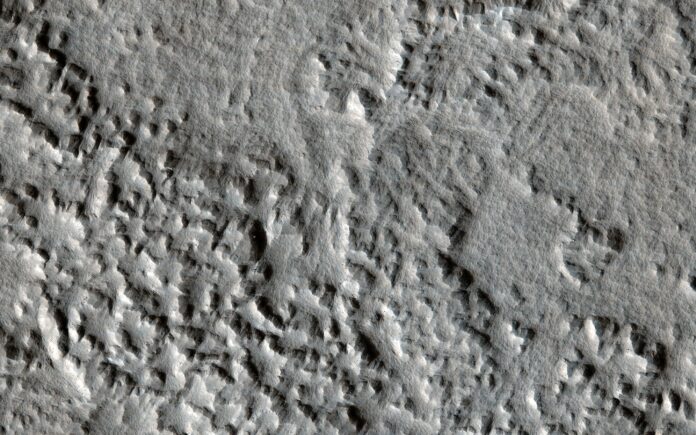A massive impact crater with a diameter of about 150 meters formed on Mars on December 24, 2021. This is the largest newly discovered crater discovered in the era of frequent spacecraft observation.
Even though the impact happened far away, the InSight lander was able to detect its seismic repercussions. The Mars Reconnaissance Orbiter’s (MRO) Context Camera first observed the crater. The material thrown by the primary impact generated a succession of “secondary” craters when the impact happened. These black markings disappear after a few years and help identify these secondary craters.
To ascertain the extent of these secondary craters, the High-Resolution Imaging Science Experiment (HiRISE) has taken images of them as they move outward. Measuring approximately 20 kilometers out from the main impact, this image shows only a few secondary craters. When contrasted to another observation where secondary craters are more prevalent, it indicates that this one is approaching the outer boundary of the field of secondary craters.
Each pixel on the map is displayed at a scale of 25 centimeters (9.8 inches). With 1 x 1 binning, the original image scale is 29.8 centimeters (11.7 inches) per pixel; with 2 x 2 binning, it is 59.7 centimeters (23.5 inches) per pixel. The map is oriented such that the north is at the top.
